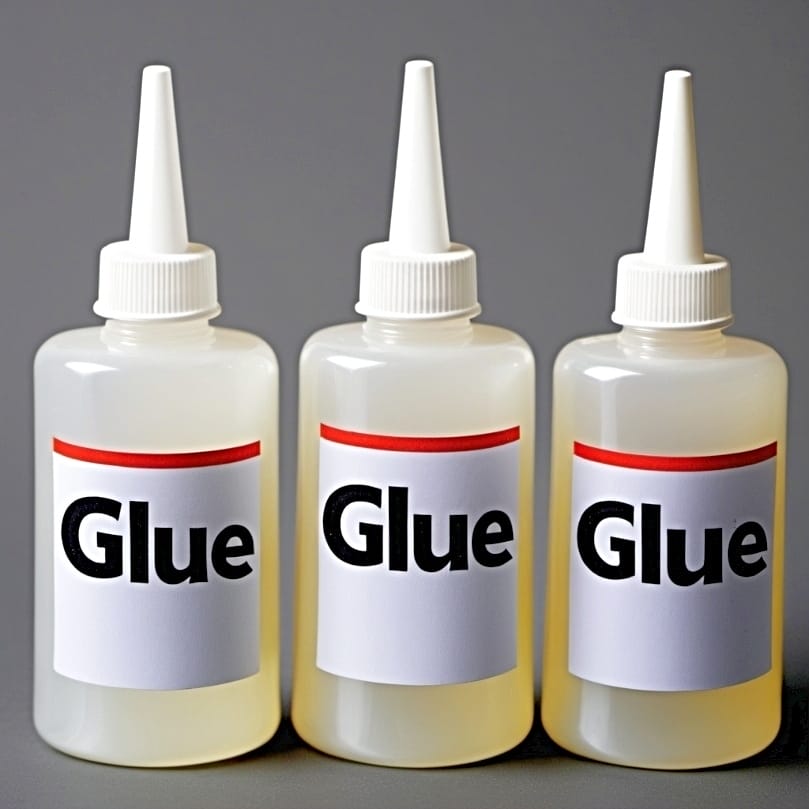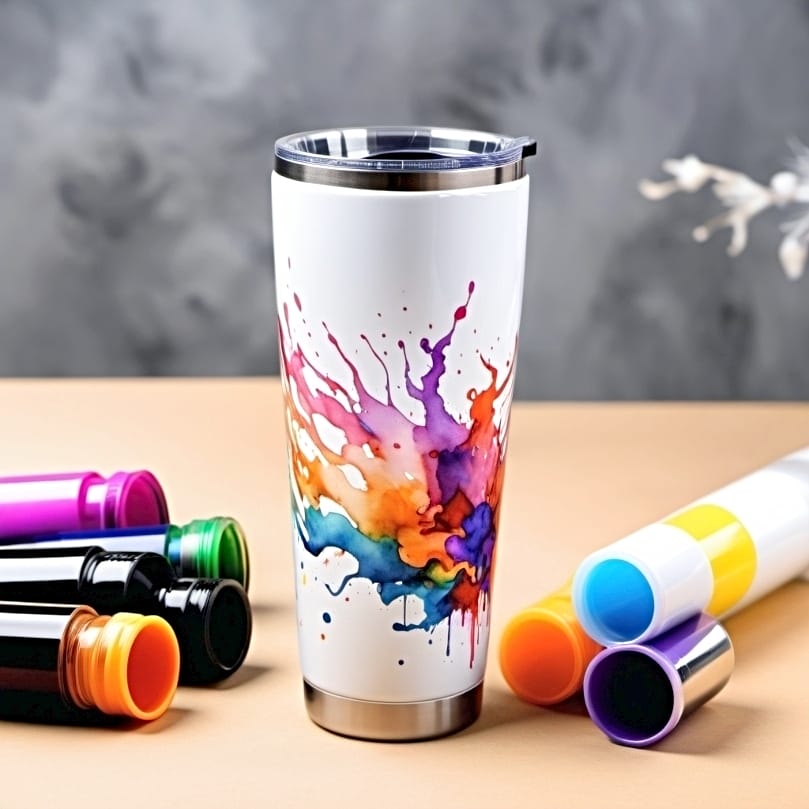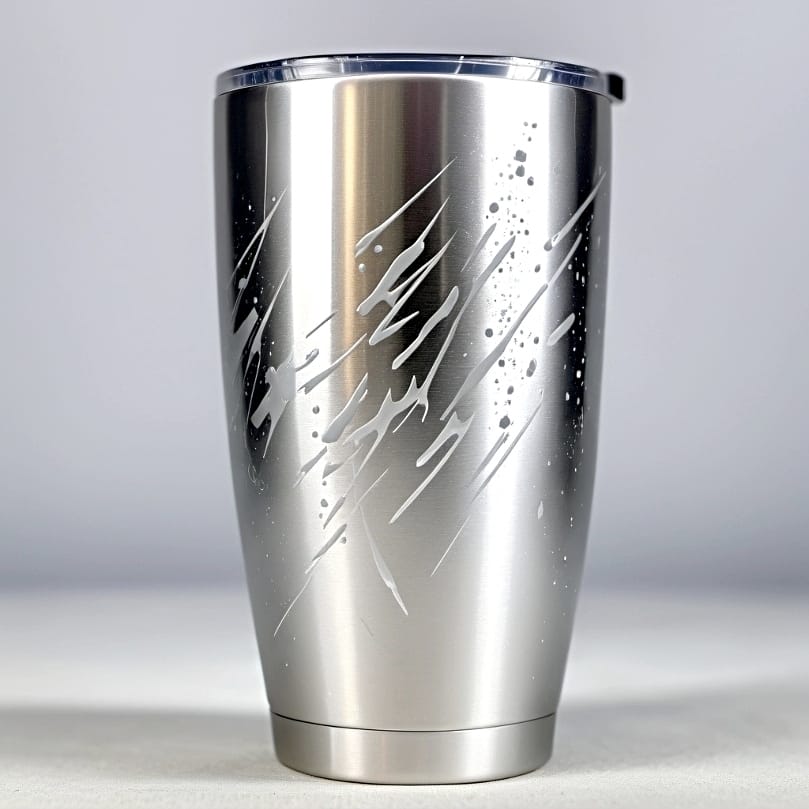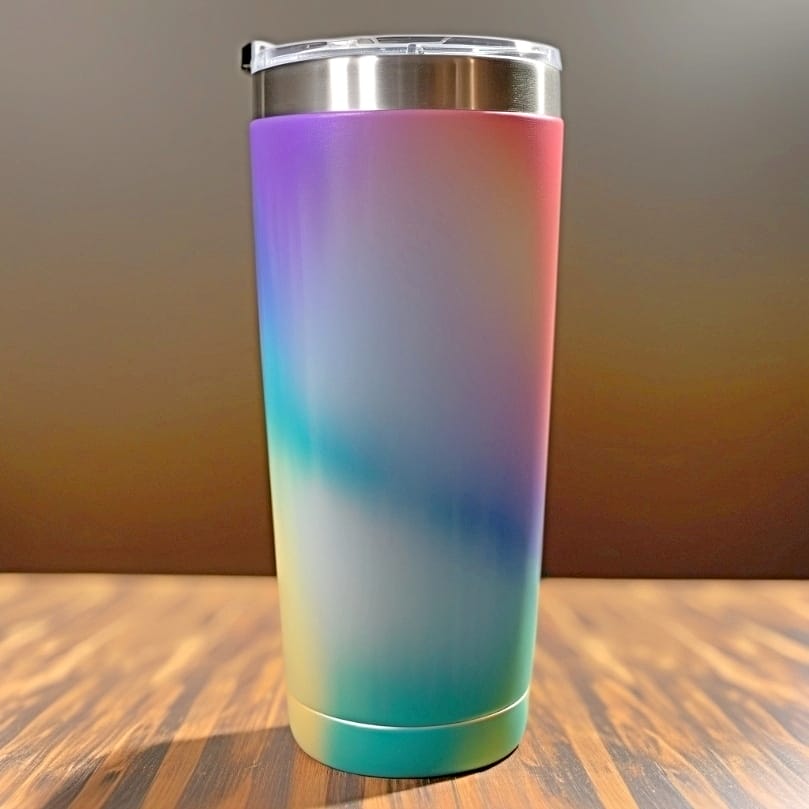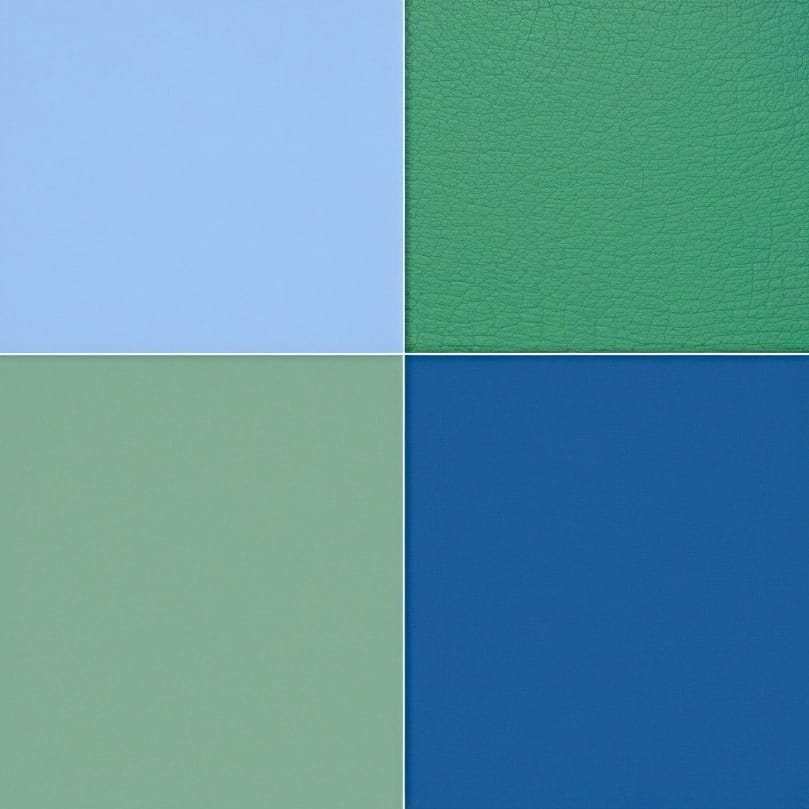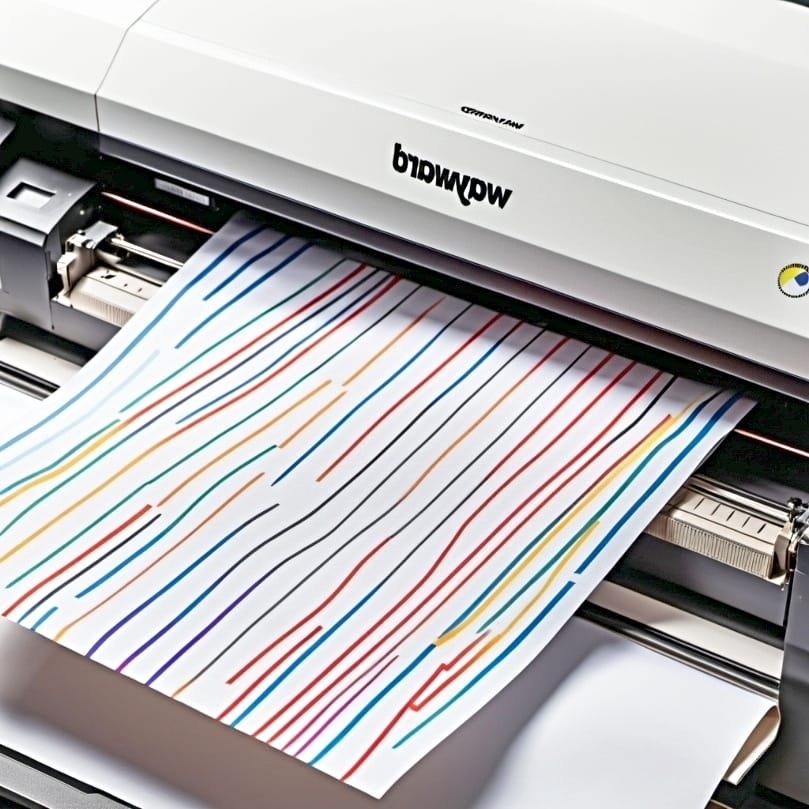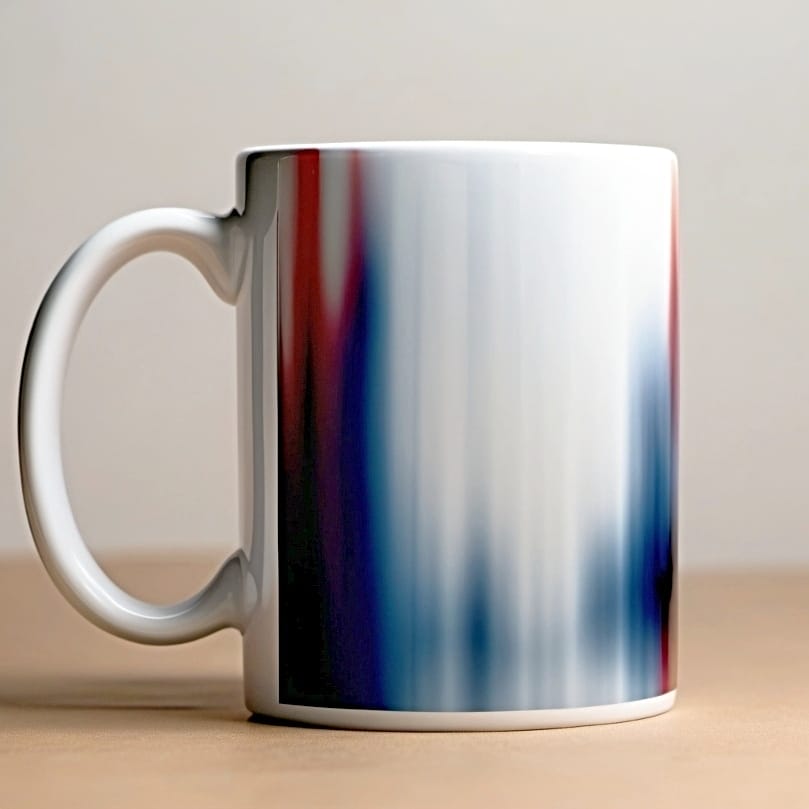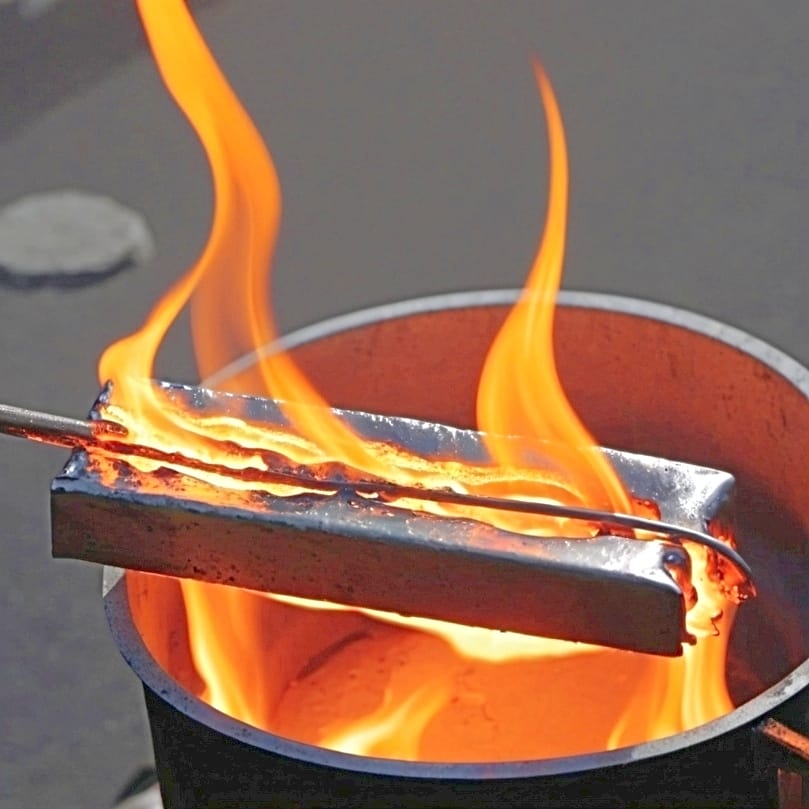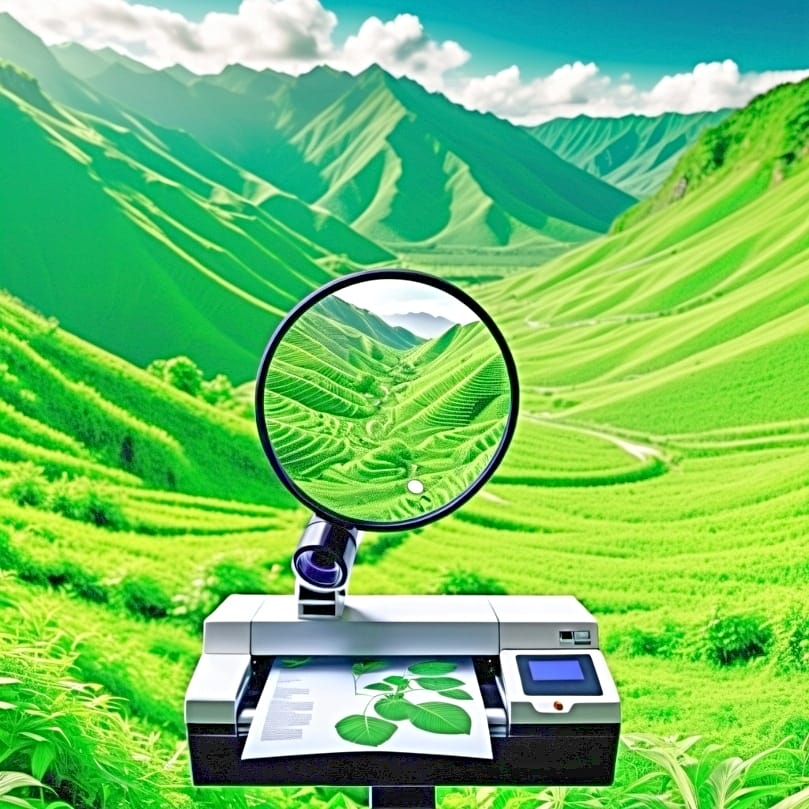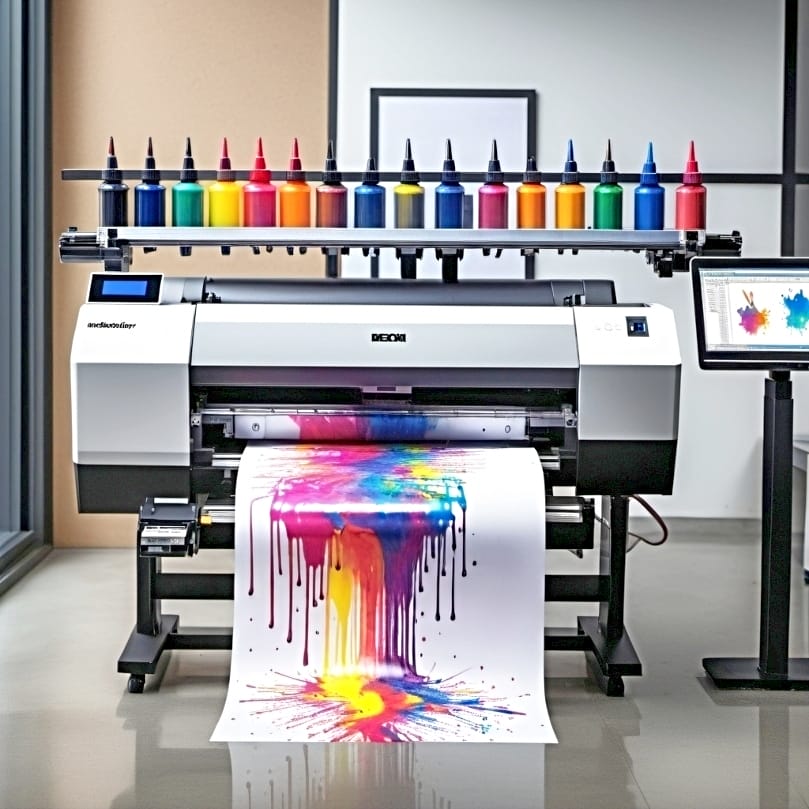Table of Contents
ToggleEncountering “sublimation paper sticking to tumbler” can disrupt your crafting flow and result in less-than-ideal prints. If you are faced with this frustration, worry not as we have got you covered! This practical guide focuses on understanding why this sticking happens and how to prevent it by selecting the right materials, adjusting your temperature correctly, and applying proper pressure. Sublimation projects are of various types – from sublimation tie dye to sublimating on glass blanks. Join us as we provide practical solutions for your problems!
Key Takeaways
- Ensure you’re using tumbler materials compatible with sublimation and check temperature settings to avoid paper sticking.
- Select high-quality, medium-weight sublimation paper designed for high temperatures and curved surfaces to achieve vibrant, smudge-free transfers.
- Perfect heat press mastery by finding the right balance of temperature, pressure, and duration for each tumbler material to prevent unwanted sticking and ensure precise image transfer.
Unveiling the Mystery: Why Does Sublimation Paper Stick to Tumblers?
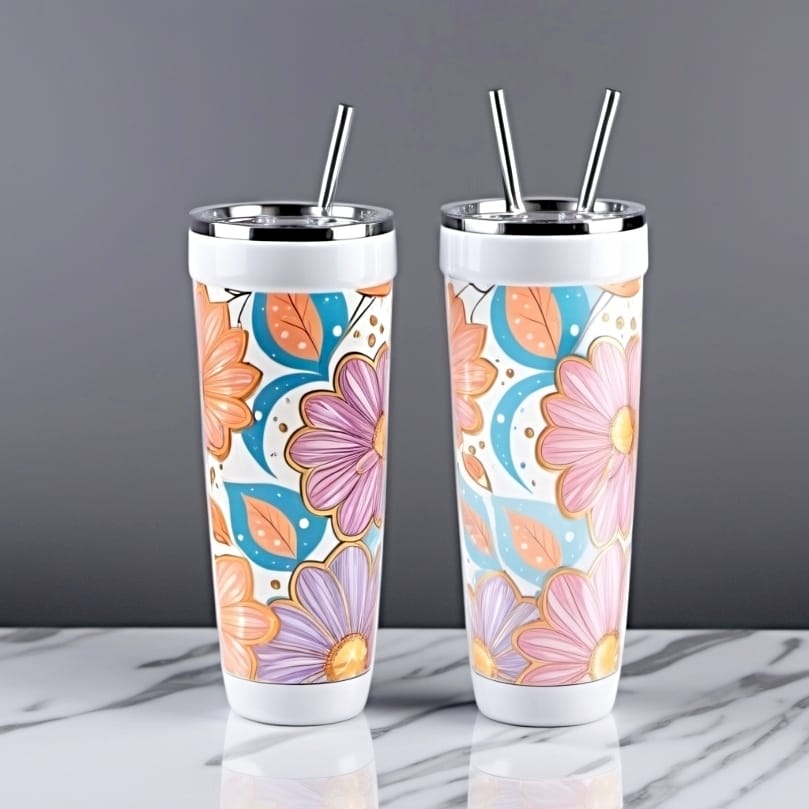
So, why does sublimation paper stick to tumblers in the first place? Well, the sticking issue can stem from several factors. The first one is the tumbler material itself. Just as certain fabrics like 100% cotton are unsuitable for sublimation, not all tumbler materials are compatible with the sublimation process. Hence, selecting tumblers made of materials that can withstand the heat transfer process is pivotal.[1]
The sublimation process is also significantly affected by temperature. The rate at which the phase change occurs is directly influenced by the temperature. Too much heat or an extended duration of heat application can cause the sublimation paper to adhere to the tumbler’s surface. If you notice the transfer paper turning brown after pressing, this could be a telltale sign that your temperature or timing settings are off, often leading to the dreaded paper sticking. Additionally, sublimation transfer paper shifts in temperature can impact the overall quality of the final product.
The Perfect Match: Selecting the Right Sublimation Paper
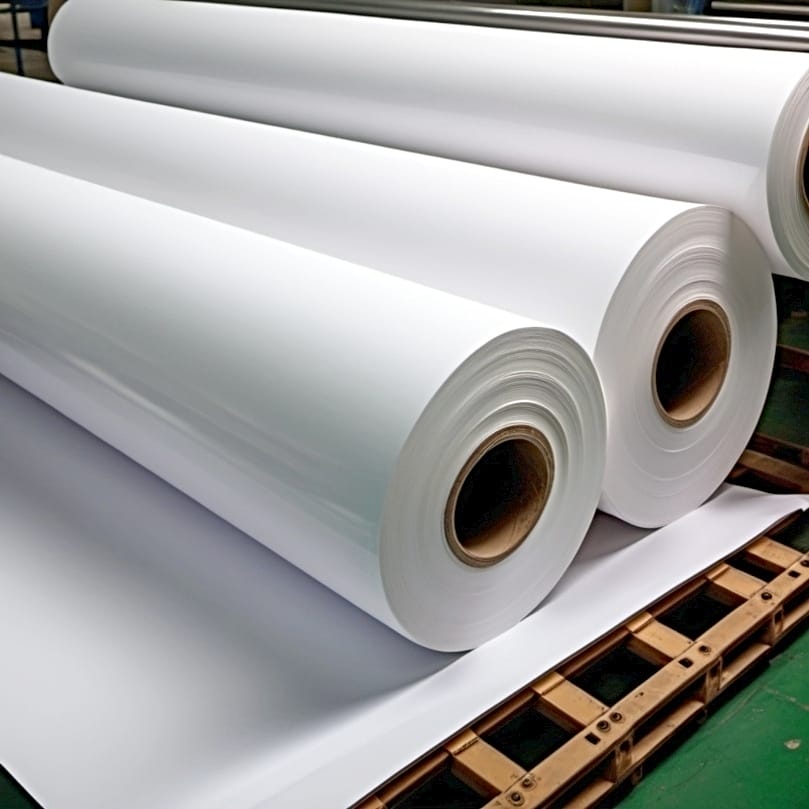
Choosing the right sublimation paper is just as important as selecting the right tumbler. The compatibility of the sublimation paper with the inks greatly impacts the absorption and release of ink, leading to better print quality. Medium-weight sublimation paper with a quick-dry coating is often used to achieve optimal transfers on tumblers, ensuring proper adhesion to the curved surfaces.
Moreover, the sublimation paper must be able to withstand the high temperatures and pressures during the dye sublimation process, preventing warping or ink bleeding. High-quality sublimation papers such as TexPrint and Hiipoo provide more vivid colors and clarity, ensuring that your designs print correctly. The right paper also ensures good ink release, contributing to the vibrancy of the printed image on sublimation blanks, such as tumblers, without causing smudging or ghosting.
Precision in Heat Press Use: Temperature and Pressure Settings
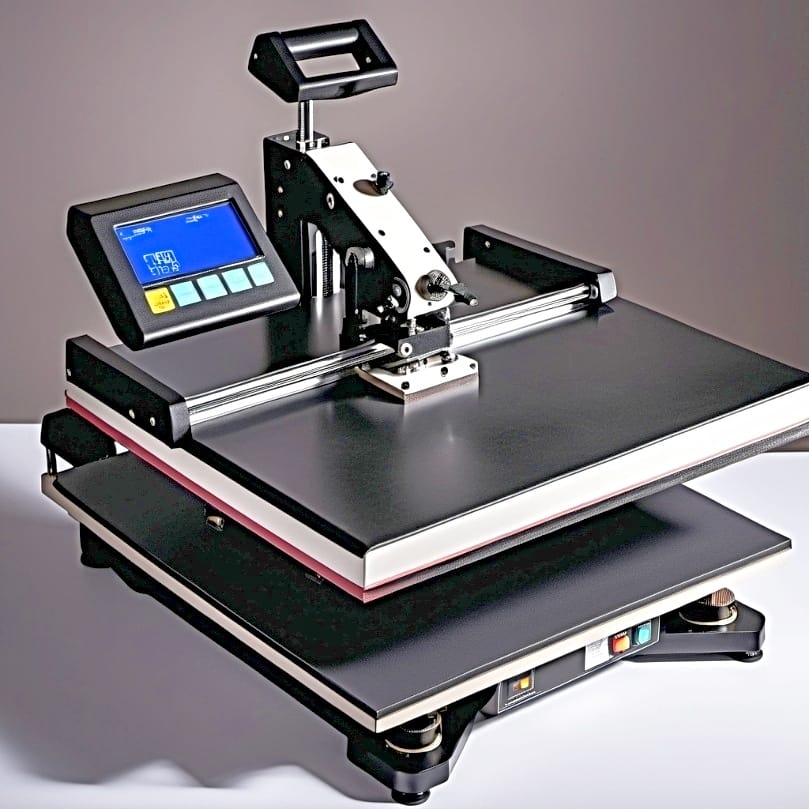
Mastering the art of the heat press is paramount in the sublimation process. The heat and pressure settings on your heat press significantly affect the outcome of your sublimation prints. In the following subsections, we’ll delve into the nuances of temperature control, adjusting pressure settings, and timing the duration of heat application.
⫸ Click Here For Best Selling Sublimation Printers And Products ⫷Let’s turn up the heat and press on, without putting ourselves under too much pressure!
Finding the Sweet Spot: Temperature Control
Temperature control remains the linchpin in the sublimation process, ensuring the sublimation ink fully vaporizes and adheres to the tumbler’s surface without causing the sublimation paper to stick. The recommended temperature range is typically between 350° F to 400° F (177° C to 204° C), with specific materials such as stainless steel tumblers needing about 365° F (185° C).
Maintaining a consistent and accurate temperature throughout the entire transfer process can prevent sticking issues with sublimation paper, which can occur if the temperature is too high. And if you’re working with newer sublimation products, it may be necessary to adjust to lower temperatures, such as 360°F or less.
Feeling the Pressure: Adjusting Pressure Settings
On to the pressure settings. As you place your cool tumbler in the press, adjust the pressure knobs until there’s a snug fit with some resistance upon closing the handle. The applied pressure should be sufficient to keep the tumbler securely in place without causing any damage or movement.
Once the right pressure setting has been found for a specific tumbler type, typically there’s no need for further adjustments unless dealing with tumblers of a different size or shape. Remember, the pressure should be firm enough for a quality transfer but not so tight that it leads to paper sticking to the tumbler or other sublimation defects.
Timing is Everything: Duration of Heat Application
The duration of heat application during the sublimation process can significantly vary, requiring careful consideration to prevent paper sticking and ensure complete image transfer. For instance, ceramic mugs generally need a press time of 150-210 seconds due to the hard-coated surface, while plastic mugs require a relatively short press time of around 60 seconds because they are more sensitive to heat.
Stainless steel tumblers may require a press time between 60-90 seconds to achieve optimal sublimation results. Glass mugs, on the other hand, can necessitate a longer press time, ranging from 180-240 seconds, depending on specific temperature and pressure recommendations. Each tumbler material requires a precise duration of heat application to balance the prevention of paper sticking and achieving a complete, vibrant transfer.
Prepping for Perfection: Surface Preparation Techniques

Before you go full steam ahead with the sublimation process, don’t overlook the importance of surface preparation. Thoroughly cleaning the tumbler surface with a mild detergent, specialized cleaning solution, or isopropyl alcohol ensures the removal of:
- dirt
- dust
- oils
- residues
Once cleaned, ensure the tumbler surface is completely dry. This helps prevent moisture-related adhesion issues and reduces the risk of paper sticking during the sublimation process. Applying a layer of primer can also improve the adhesion and durability of the sublimation print on tumblers. Always remember to follow the manufacturer’s instructions for primer application and drying to provide a receptive surface for the sublimation transfer.
Solving the Sticky Situation: How to Remove Stuck Paper
Despite your best efforts, you may still encounter paper sticking. But don’t worry, it’s not the end of the world. There are several ways to remove stuck paper from tumblers. A lightly damp tissue can sometimes be effective for removing white residue left by sublimation paper from glass mugs.
If a damp tissue doesn’t do the trick, you can try rubbing alcohol or products like Goo Gone to remove sublimation paper residue. If the paper residue persists, gently scrubbing with warm soapy water can help. While employing these methods, take care to avoid damaging the surface of the tumbler, especially with abrasive tools or harsh chemicals.
Fine-Tuning Your Technique: Making Small Adjustments for Big Results
Perfecting the sublimation process involves more than just understanding the basics. It’s about fine-tuning your technique and making small adjustments that lead to significant improvements. To avoid unintentionally pressing lines into soft tumbler surfaces, rip or cut the edges of the sublimation paper around the design. This minimizes the risk of unnecessary ink transfer.
And don’t underestimate the power of a test print. Finding the optimal heat application duration specific to the tumbler material can lead to more consistent results and reduce sticking issues. Additionally, it is crucial to remove the sublimation paper immediately after pressing to avoid the paper sticking to the mug and leaving residue.
Maintaining Your Equipment: Printer and Press Care

Maintaining the sublimation printer and heat press in good condition carries equal importance as mastering the sublimation process. Here are some tips to keep your equipment in good condition:
- Regularly use your sublimation printer to prevent ink clogs.
- Always turn off your printer correctly to seal the printer’s nozzles and avoid clogs and dry out.
- If you encounter print head clogs, use the printer’s built-in cleaning function or perform print head cleaning using recommended cleaning solutions.
By following these tips, you can ensure that your Epson printers, sawgrass sublimation printer, and heat press are always in good working condition.
Maintaining your heat press is also of utmost importance. Over time, the rubber pad of the heat press can deform, affecting the uniform application of pressure during transfers. Hence, it should be replaced whenever signs of deformation appear. Protective sheets and covers for the heat press should be utilized and replaced as necessary to extend the life of the platens.
Keep a maintenance log to plan and track your heat press maintenance actions, and don’t forget to clean the upper platen periodically with a non-abrasive cloth and an appropriate cleaner to avoid residue build-up. Lastly, remember to keep your printer firmware and software updated to enhance performance and resolve issues.
Beyond the Basics: Advanced Troubleshooting Tips
Having covered the basics, it’s time to explore some advanced troubleshooting tips. Did you know that excess moisture in the production environment can lead to sublimation paper sticking issues and poor transfer results? That’s right, environmental factors can impact the sublimation process.
One way to combat this issue is by prepressing the item for a fraction of the overall press time needed for full sublimation. Not only does this help eliminate moisture, but it also reduces the chance of paper sticking. So, don’t let the weather dampen your sublimation spirits.
With the right strategies and techniques, you can conquer any sublimation challenge that comes your way.
Creating Consistency: Standardizing Your Sublimation Process
In the sublimation process, consistency holds the key. Standardizing the process on tumblers ensures high-quality image transfer and helps you develop a thorough understanding of the procedure. Using the correct tools, such as sublimation wraps or heat-resistant tape, and ideally, a dedicated tumbler heat press, can aid in achieving consistent outcomes in sublimation.
Applying heat and pressure uniformly across tumbler sublimation projects requires sublimating one tumbler at a time and adhering to consistent pressure and time settings. Incorporating checklists to minimize errors and following a specific cooling routine after pressing can also help prevent image defects. By standardizing your sublimation process, you can ensure that every tumbler you print is a masterpiece.
Ensuring Endurance: Testing for Longevity
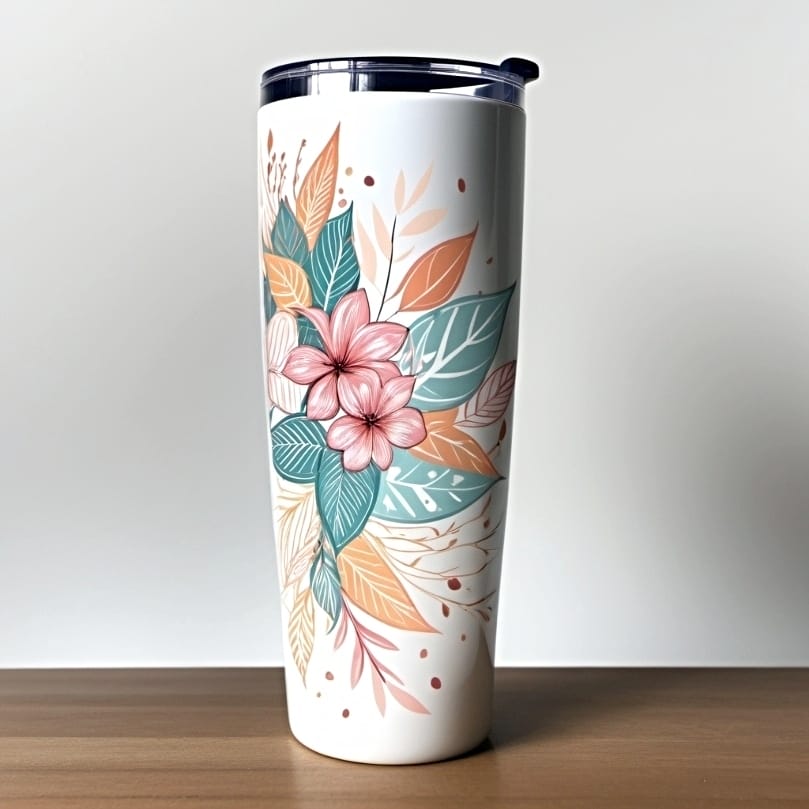
Your mastery of the sublimation process is reflected in the longevity of your sublimation prints. Color fastness is a critical aspect of testing sublimation prints for durability, indicating how well colors resist environmental stresses like washing, rubbing, and light exposure. Washing and rubbing tests can help determine the durability of your prints both before and after washing.
For accurate washing test results, use a mild detergent and water at recommended temperatures, submerge and agitate the sample gently, then observe for any alterations in color after drying. Rubbing tests involve using a clean cloth to rub against the print with consistent pressure and then evaluating for any color transfer or changes in color intensity. Finally, light fastness testing can check for color fading or shifting, thus determining the print’s resistance to light. By conducting these tests, you can ensure that your sublimated images last for the lifespan of the tumbler.
Summary
In summary, mastering the sublimation process involves a deep understanding of various factors, from selecting the right tumbler material and sublimation paper to fine-tuning temperature, pressure, and timing settings. Regular equipment maintenance, advanced troubleshooting, and consistency in the process also play significant roles in achieving flawless sublimation prints. With these insights, you’re equipped with the knowledge to prevent sublimation paper sticking to tumblers and to create vibrant, durable prints.
Remember, sublimation is as much an art as it is a science. It involves a learning curve, and every mistake is an opportunity to improve. So, keep experimenting, fine-tuning your techniques, and, most importantly, enjoy the creative journey. After all, the joy of sublimation comes from transforming a plain tumbler into a unique piece of art, one print at a time.
Frequently Asked Questions
How do you get sublimation paper off a tumbler?
You can easily remove sublimation paper from a tumbler by washing it in the dishwasher, using rubbing alcohol or nail polish remover, applying paint stripper, or heating the mug and rubbing it with Scotch-Brite. Give these methods a try and find the one that works best for you!
Why is my sublimation paper leaving residue?
It seems that the residue is caused by the coating on the paper melting at a lower temperature than usual, which leads to the fibers holding in the coating and leaving behind the powdery residue. Be mindful of the temperature to avoid this issue.
What happens if you overheat sublimation?
Overheating sublimation can lead to issues such as color shifting, scorching, burning of the substrate, and damaging the sublimation paper. It’s important to carefully control the heat to avoid these problems.
What is the best temperature for sublimation tumbler in press?
The best temperature for sublimation tumbler press is 350 degrees F for 80-100 seconds with medium pressure. Rotate the tumbler if needed for an additional 80-100 seconds. Remove the tumbler immediately from the press and peel while hot. Be careful, as it will be very hot.
How can I ensure consistent results in the sublimation process?
To ensure consistent results in the sublimation process, standardize your process, make small adjustments based on results, use the correct tools, apply heat and pressure uniformly, and follow a specific cooling routine after pressing. By doing so, you can improve the quality and consistency of your sublimation results.
References
- Verger, R. (2021, May 21). How the burning heart of a jet engine functions without melting. Popular Science. https://www.popsci.com/science/materials-that-handle-hottest-temperatures/

